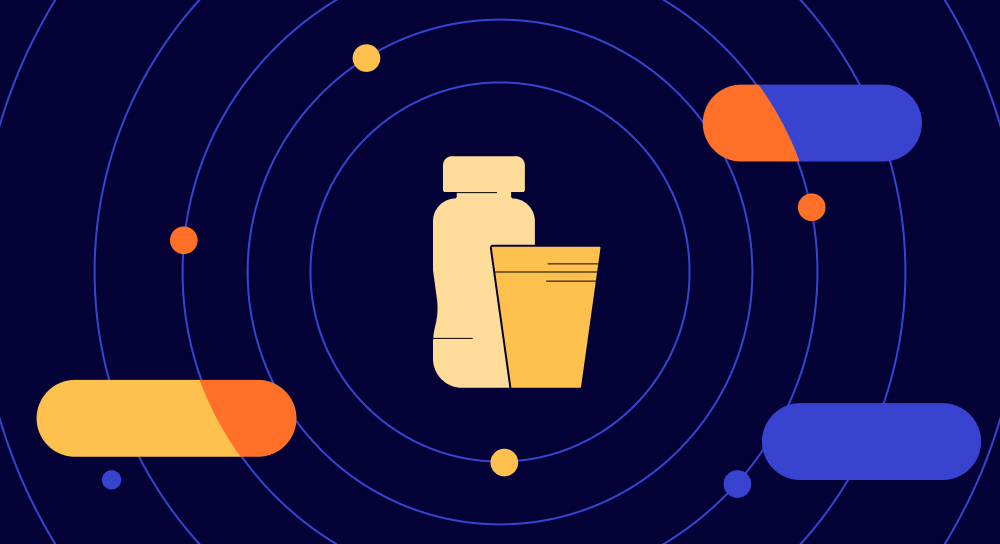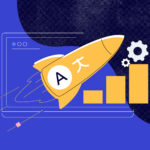As Nestlé’s Group Head of R&D Information Technology, and former AI Program Lead, Carolina Pinart knows first-hand that staying competitive in the consumer packaged goods (CPG) space requires constant technology innovation.
One of Pinart’s key responsibilities at Nestlé — which operates more than 2,000 brands globally — is integrating emerging technologies into its products and business operations. Over the past few years, the company has implemented AI and automation to streamline its manufacturing and R&D process, and spur new product ideas.
In a recent webinar with Unbabel, Pinart discussed a range of tech topics, including:
skepticism about AI and automation;
what an organization should consider before implementing AI;
how tech innovation happens at Nestlé;
how to convince internal stakeholders to invest in AI.
Below, we’ve compiled the Q&As from their conversation.
Technology and innovation are an essential part of how Nestlé delivers products. How does the company come up with new technology-driven ideas?
We separate innovation into new products and renovated products. An example of a new product is a plant-based food that didn’t exist in our portfolio before. A renovated product would be something like adjusting the recipe for Kit Kat chocolate bars with less sugar.
Our renovated products usually come from our internal researchers and scientists. New products — which aim to be more disruptive and transformative — also come from us internally through our R&D group. But sometimes they come from outside through our open innovation partnerships with startups and academia, or through acquisitions.
We also have an internal program called “InGenius” where anyone in the company can submit a new product idea, and if the idea is approved, the idea owner gets a team to help develop and market the product. 80,000 Nestlé employees take part in the InGenius program; it’s been running for seven years now.
Can you give us some examples of how AI and automation are used at Nestlé?
If we can automate to reduce risk and costs, as well as increase revenue, we will use some form of AI and machine learning to help the business.
We use predictive maintenance automation in our factories via machine sensors that sound an alarm if something is wrong. We also use predictive models to make troubleshooting more efficient, because troubleshooting left unmonitored will stop the production line unnecessarily.
We reduce costs through chatbots that automate first line customer support. We also use chatbots with our supply chain partners to help them find internal resources and documents they need.
To give you an idea of the diversity and the breadth of AI use cases at Nestlé, when I led the AI program, we handled over 500 AI projects that represented 45 different use cases.
You mentioned to me offline that you are using Emotional AI. Can you explain what that is and how it’s different from traditional AI?
At this point we’re just experimenting with Emotional AI.
For instance, when we deliver a new product, we have what we call a sensory panel — people come to our centers and taste a new soup or chocolate bar and give us their opinion. We analyze the results and put them into categories. Each product has different variations, and we test for the variation that ranks highest on taste, health, and sustainability.
Lately, we’ve started monitoring the testers on camera, and this is where the Emotional AI comes into play. While they’re testing we can sense how they’re feeling. Emotions are hard to fake. Someone might write down that they love a soup, but their face says something different. We’ve noticed a difference between what people put in their surveys and what they talk about in the hallways at panels.
Another example of Emotional AI is if someone is standing in front of a vending machine, built-in sensors can sense how a person is feeling and we can suggest something like stronger coffee!
This type of technology is still in the idea stage. All technology usage comes down to cost benefit analysis, and the benefits need to be high.
Would you say the AI you’ve been using has helped Nestlé make decisions faster?
Absolutely. Not only has AI helped us make decisions faster, it has also unveiled insights we were not aware of.
For instance, we’ve used AI to spot trends on Chinese social media sites, and then suggest concepts for new products based on those online conversations. This is faster and usually more insightful than buying industry reports from analyst firms.
What should a company consider before implementing AI technology?
We approach AI like a venn diagram, with four bubbles.
The first bubble is: What is the value of using AI? What is the business problem you are trying to solve? You should not be doing AI for AI’s sake.
The second bubble is: Do we have the AI expertise, either internally or through our partners?
The third bubble is: Do we have enough useful data available?
The fourth bubble is: Do we have the right governance — legal and ethical standards?
We need to have a confluence of all four bubbles before we decide to implement AI.
How do you convince internal stakeholders to invest in AI?
We convince them with value. AI is different from more traditional technology but it’s still a technology at the end of the day. So there has to be a business case for it.
But AI is not deterministic; it’s going to evolve over time and needs to be monitored and requires proper training. There’s always governance with any technology. But with AI, you also need to take into account whether you are using the right data. What are the ethics around AI use? Is there bias that could be harmful? Do we have a procedure after we launch to make sure the AI will behave as designed? AI is unique because it requires stronger governance at the beginning, middle, and end.
Are there countries or cultures more open to AI and other new technologies?
In the Great China region, people are super accustomed to AI and automation. Data is very concentrated. Almost everything online is happening through WeChat, and you can see and access what would be unthinkable in other countries.
In Africa or Latin America, there is not nearly as much access to data to use AI as there is in China so AI is not as advanced in those areas.
Are there certain countries or industries that are more skeptical about AI?
AI acceptance is based on the use case rather than the country or industry. Think of call centers. AI is not ready yet to do all the work a human does. But it could potentially automate all call center activities.
We automated factories with robots to do stocking 20 years ago and those factory jobs were taken away. But new ones were created such as supervisors of robots, monitoring and maintenance, as well as other roles.
A company needs to make the business case for AI and determine what jobs will change. Then they can convince decision-makers, such as the factory managers, to use AI. But the business case has to be thorough. If those jobs change, how is your company going to reskill and upskill your people to work in an environment that’s changing because of AI?
Check out the full webinar on how AI is used to spur innovation at Nestlé.












